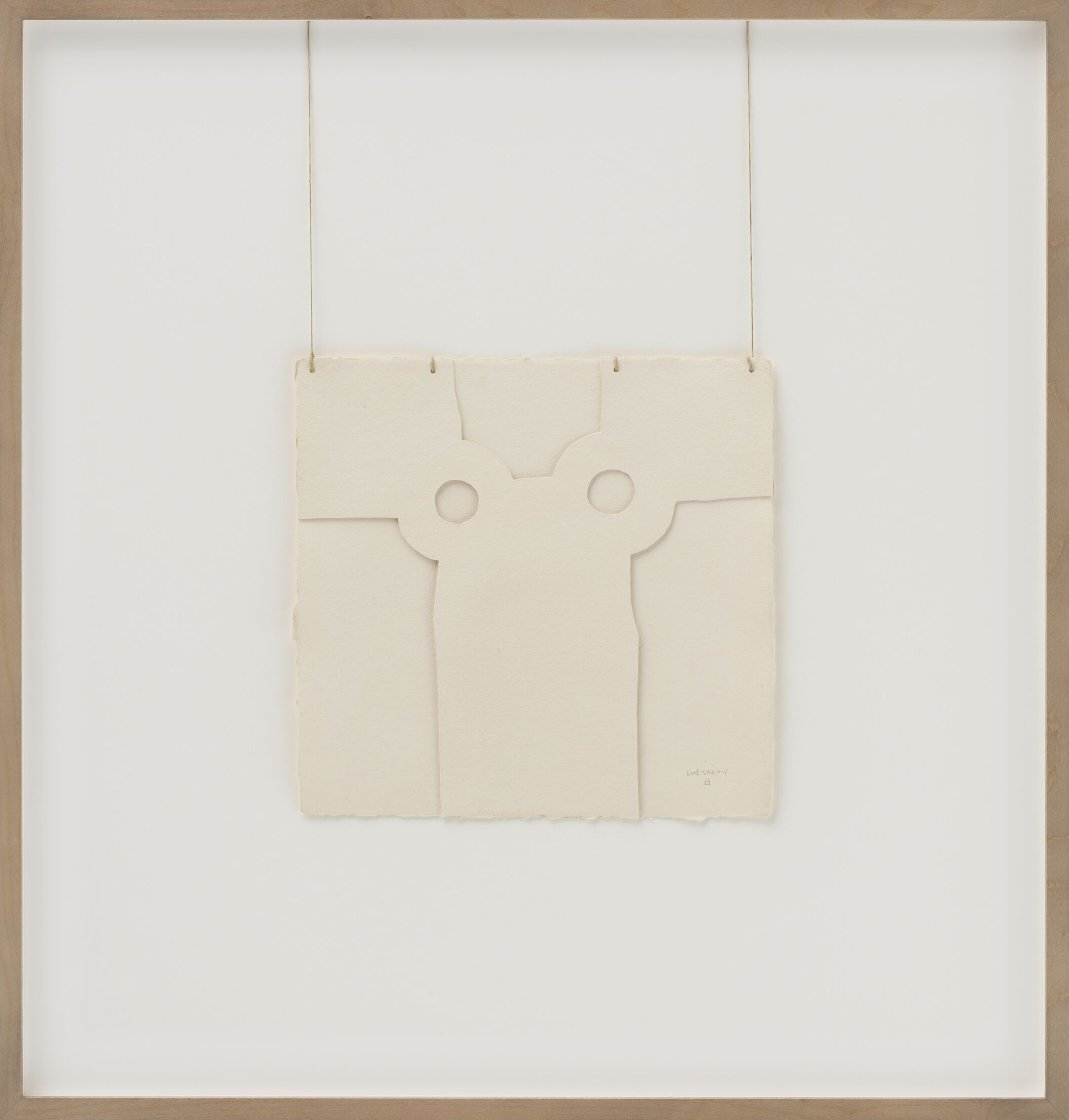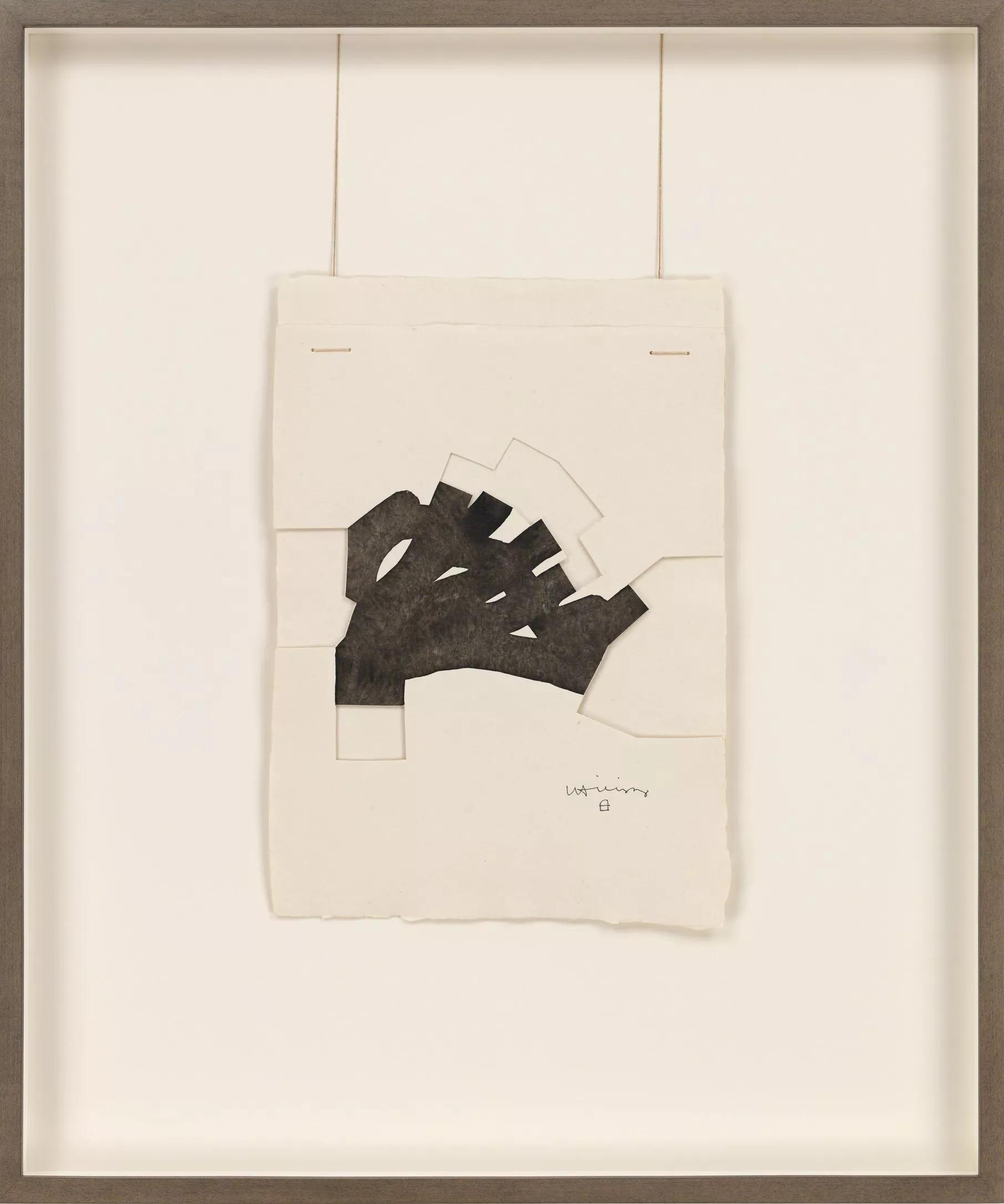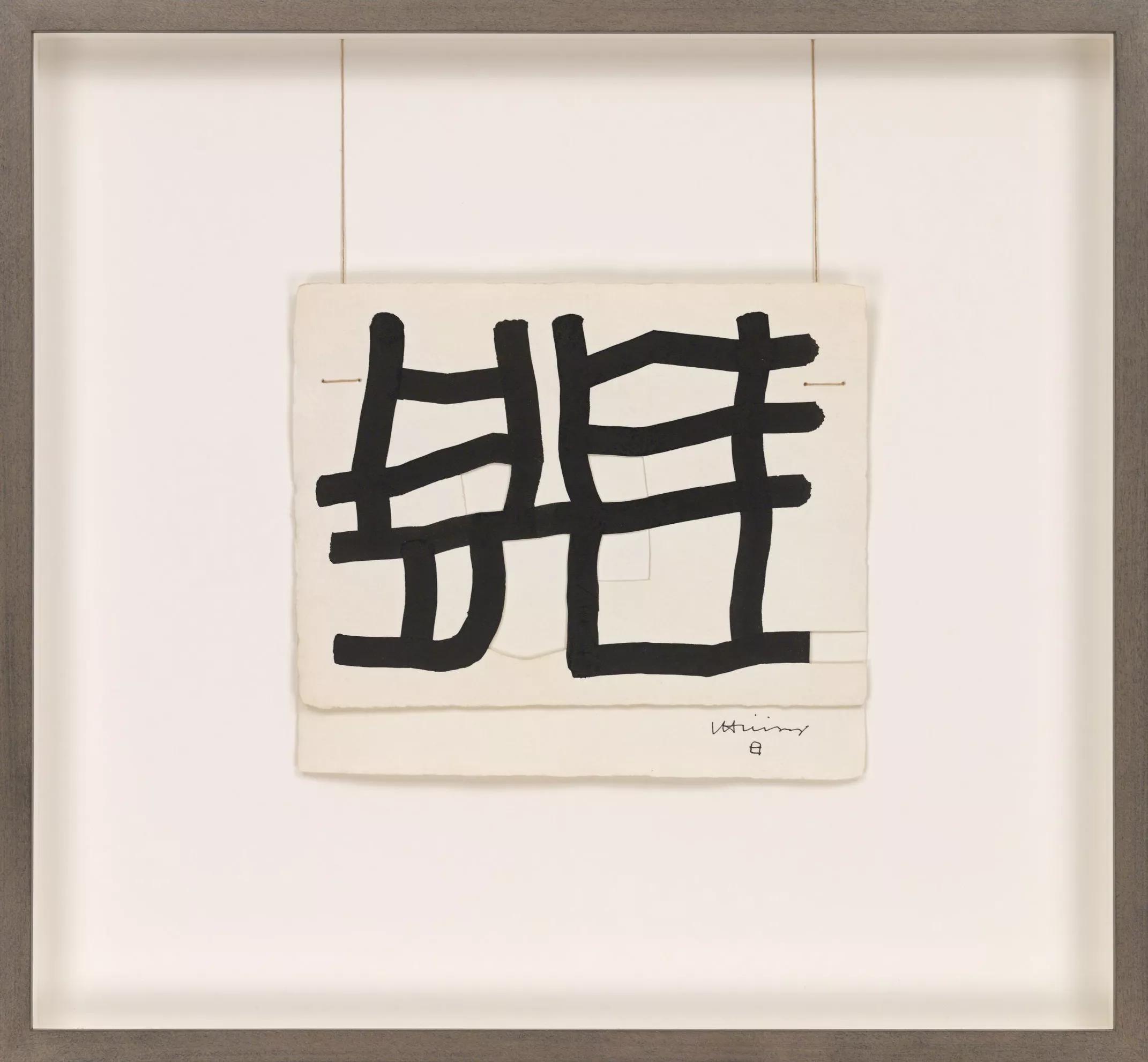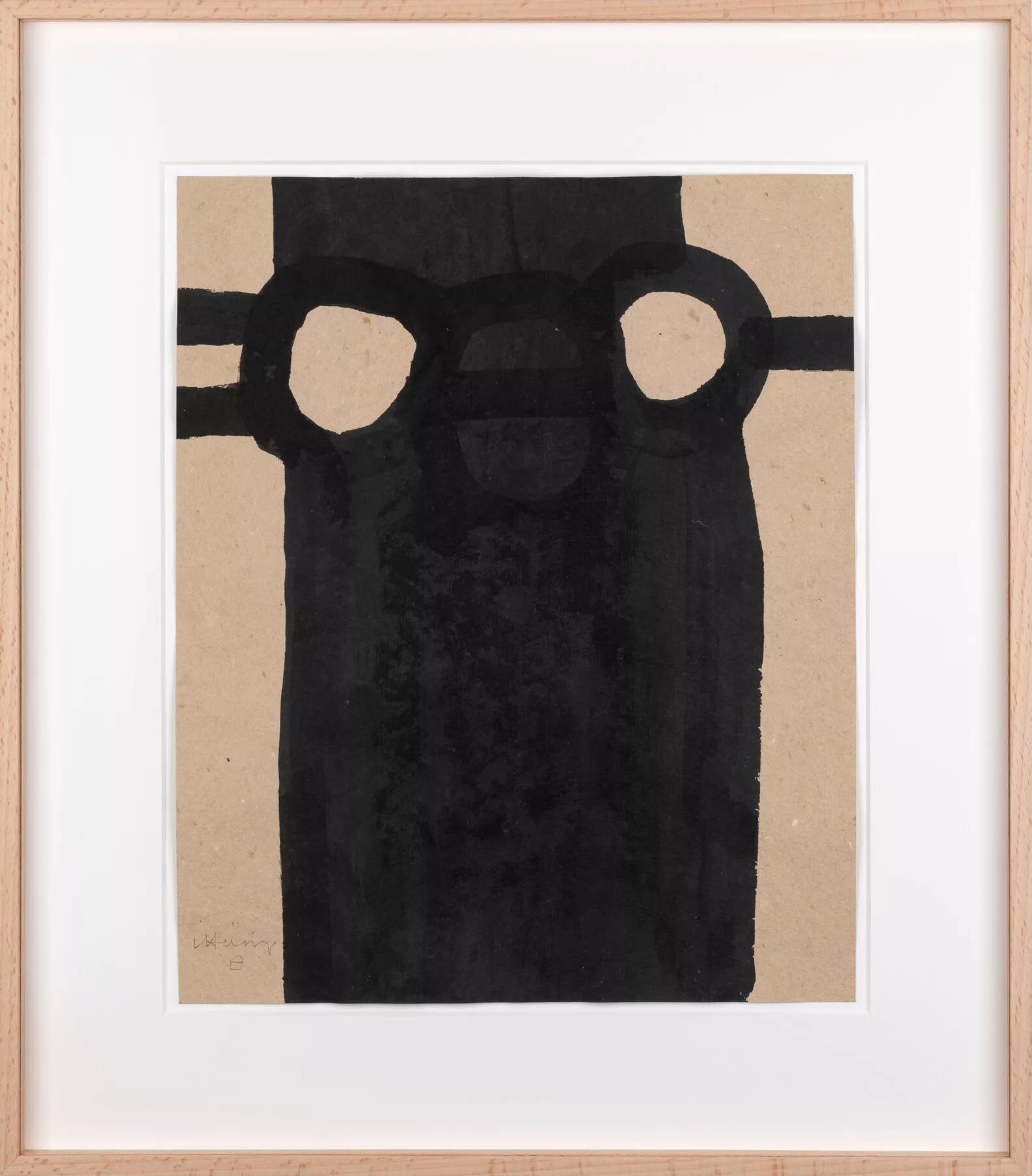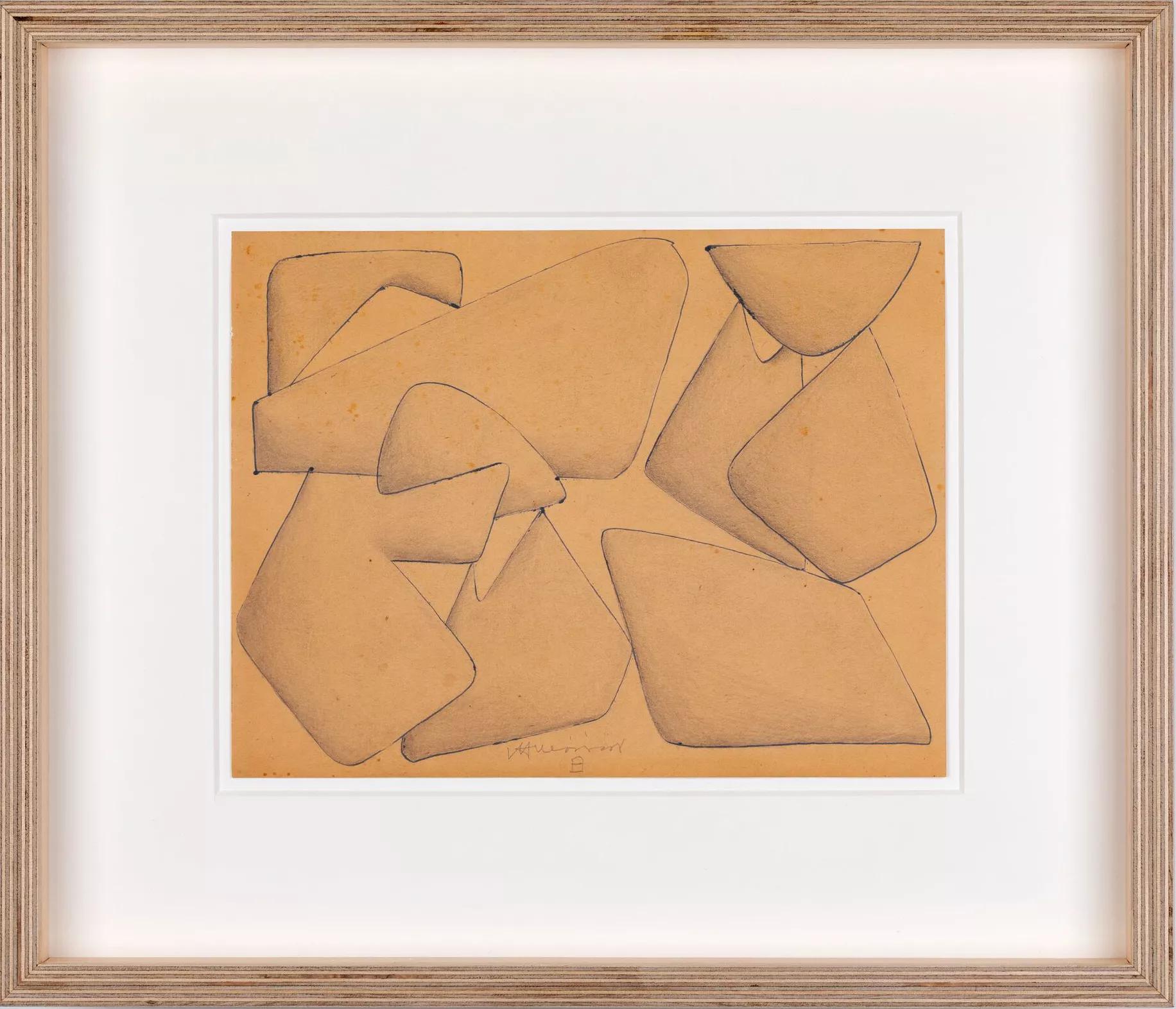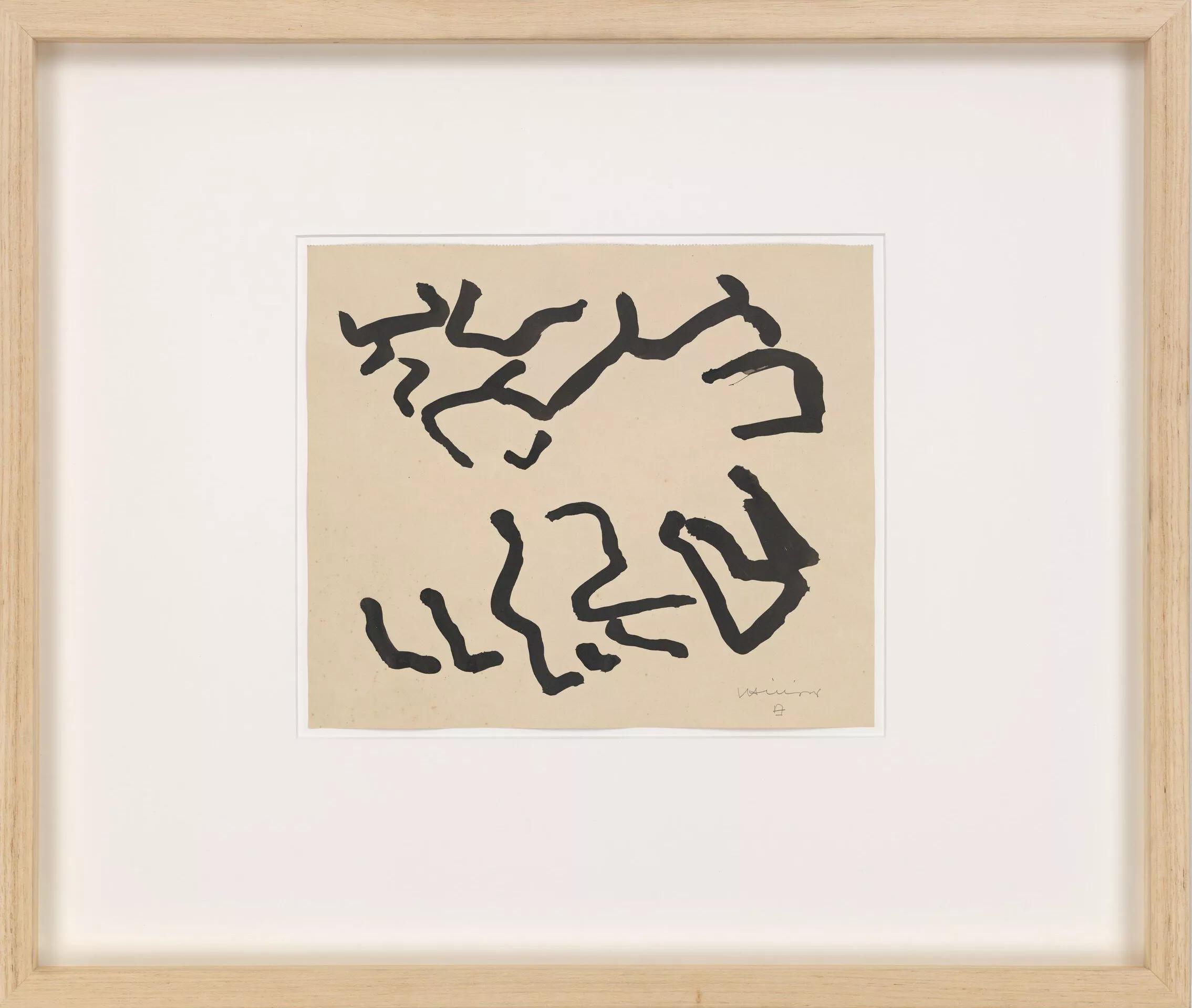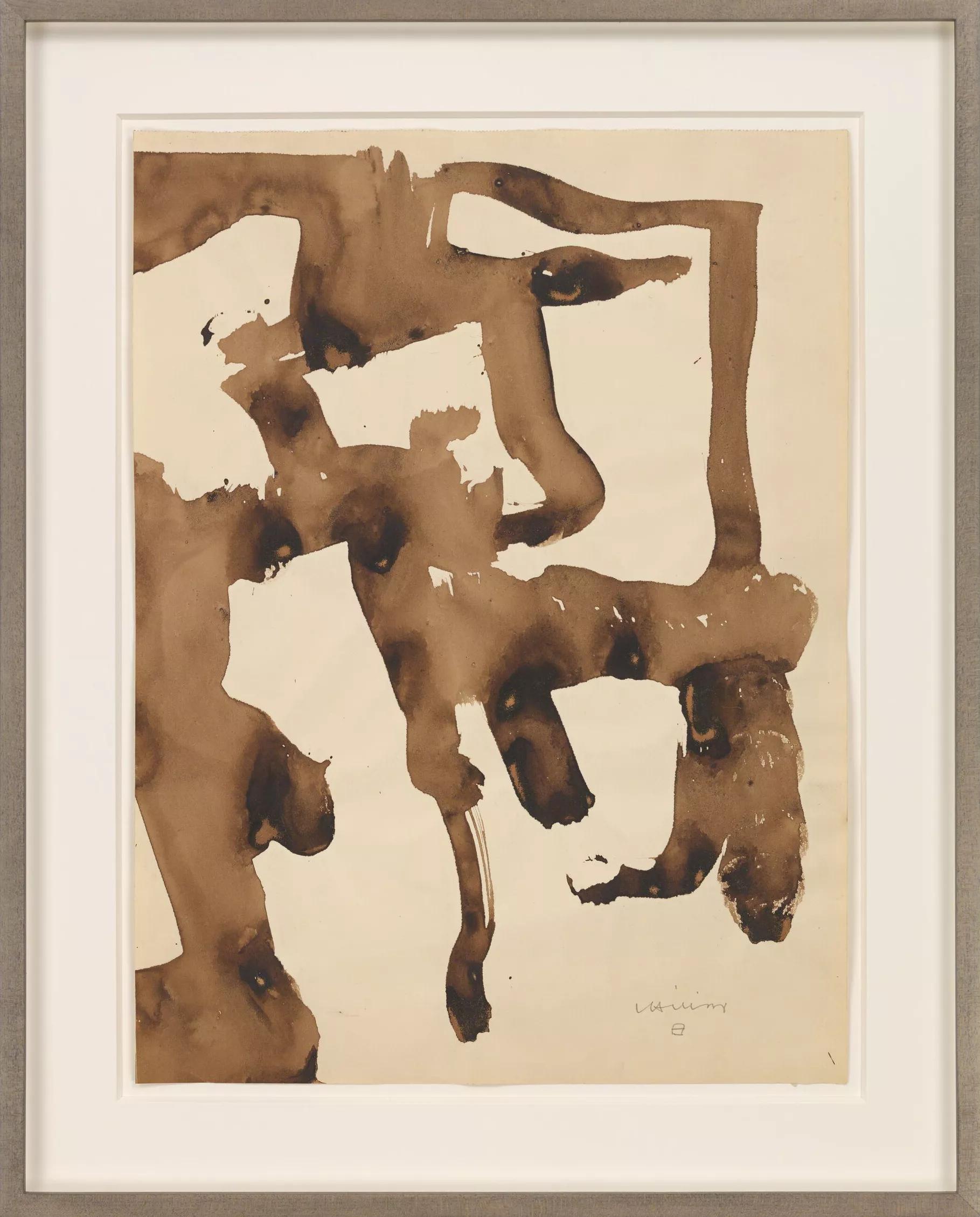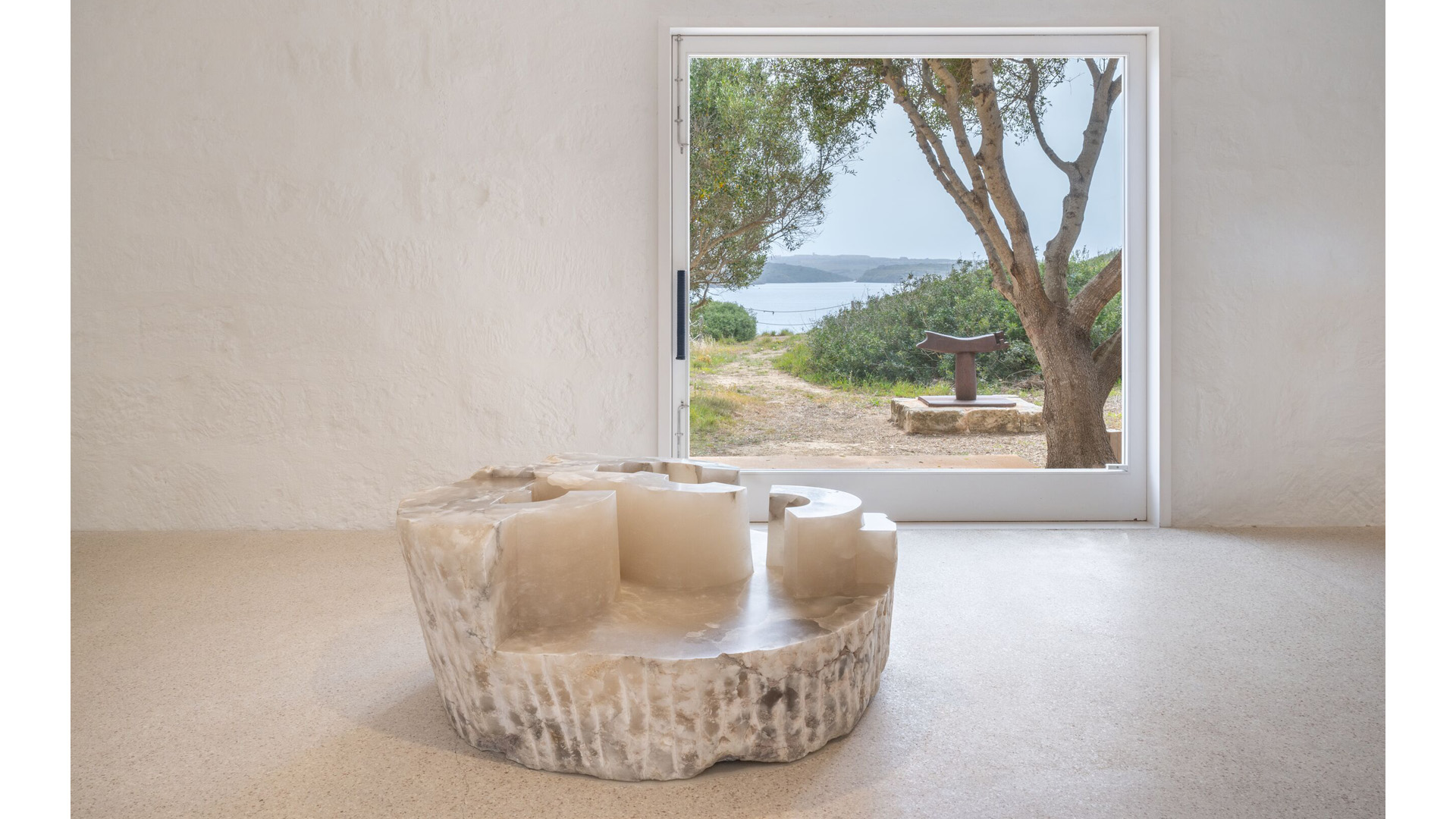‘Chillida in Menorca’ celebrates the artist’s profound connection with the island through a major presentation of sculpture and works on paper, including several created during his time in Menorca. Featuring over 60 works spanning half a century from 1949 to 2000, the exhibition exemplifies the full breadth of Chillida’s oeuvre. The exhibition is developed in collaboration with the Estate of Eduardo Chillida on the occasion of ‘Eduardo Chillida 100 years.’
EXPLORE THE EXHIBITION
In Menorca, Chillida drew inspiration from the white light of the Mediterranean that was a perfect contrast to the ‘black light’ of his native Basque Country, as he described it. He held an enduring admiration for the light, the open-air quarries of local ‘marès’ stone and the monuments from the Talayotic period, including T-shaped ‘taules’ (‘tables’ in Catalan) which inspired some of his works and have been recognised as a World Heritage Site by UNESCO in 2023.
Chillida’s connection with Menorca formed during the many summers he spent on the island from 1989. Setting up an outdoor studio at ‘Quatre Vents’, the family house he created with his wife Pilar Belzunce in Alcaufar, he found a quiet place to work on chamotte clay sculptures, surrounded by the fields and their dry-stone walls. At ‘Quatre Vents’, he also worked in a studio with a large window overlooking the sea, where he explored many of his ‘gravitations’.
‘The light in Menorca is magnificent. The island has a beautiful history, there is a very interesting stone culture, and it’s so full of wind. So, I have heard it said: Menorca, wind and stones.’—Eduardo Chillida
The exhibition opens with a series of large format ‘gravitations’, two-dimensional works on paper exploring the qualities and limitations of space. These delicate black and white works result from cutting various layers of paper, attaching them to threads and then suspending them to allow air to circulate between them. Alongside the ‘gravitations’ is ‘Mural G-56’ (1985), a large-scale mural which uses black graphic elements to draw from the same exploration between positive and negative space.

‘Chillida in Menorca’ showcases a series of well-known steel sculptures and wood reliefs, emphasizing Chillida’s interest in making space visible through the forms around it. Initially a student of architecture, Chillida explored concepts such as the limit, space and scale. In ‘Proyecto para un monumento’ (Project for a Monument)’ (1969), a play on scale linking to the artist’s many public monuments, interior space is shaped through three solid blocks that fit together. In other works, totemic elements of an intimate human scale continue to emphasize the interplay between solid forms and negative space.

Throughout the exhibition, a selection of works are presented on plinths made from ‘marès,’ the local stone used to build the 18th century building housing the gallery. The presentation concept has been developed by architect Luis Laplace, who led the restoration of Hauser & Wirth Menorca and the reconditioning at Chillida Leku – the museum created by Eduardo Chillida in his lifetime – and places the artworks in dialogue with the surrounding landscape and the architecture of the space.

Idea para un monumento II (Idea for a Monument II)
1994
Corten steel
59 x 73 x 84 cm / 23 1/4 x 28 3/4 x 33 1/8 in

The act of making was a crucial concept in Chillida’s work. Rejecting molds, Chillida embraced the irregular morphology of works created by the direct manipulation with his hands, such as the chamotte clay sculptures he worked on in his Menorca studio.
The exhibition features eight drawings featuring the hand, which was the artist’s closest subject and his most immediate tool to work graphically or sculpturally. In hands, he found a living element to investigate space through the movement of the fingers, which open and close in an attempt to grasp their surroundings.
The final galleries in the exhibition foreground the artist’s passion for natural phenomena. He incorporated organic shapes in his early works on paper and steel sculptures and emphasized the natural qualities of the materials he worked with such as granite, alabaster and felt, amongst others. An example of this is the granite piece ‘Escuchando a la piedra III (Listening to the Stone III)’ (1996), in which the artist removed just enough material to reveal the form and emphasize the rock’s impenetrability. Similarly, exploring the versatility of steel, the sculpture ‘Lotura XXVII (Bond XXVII)’ (1992) is composed of longitudinal arms created in the forge, without moulds, and manipulated to open up and then wrap back into themselves, quietly inhabiting the space with a tree-like quality.
Having grown up by the Atlantic Ocean, Chillida recalled spending hours contemplating the waves and referred to the sea as his teacher. ‘Homenaje a la mar IV’ (Homage to the Sea IV)’ (1998), from the series of tributes which Chillida dedicated to figures or phenomena that inspired him, evokes the rugged Cantabrian coastline through geometrical shapes hewn out of alabaster in contrast to an uncut stone base. In dialogue with this sculpture is ‘Homenaje a la arquitectura II (Homage to Architecture II)’ (2000), a reference to Chillida’s ongoing exploration of forms – whether organic or architectural – and their structuring in space.
Placed in dialogue with the Mediterranean Sea is ‘Proyecto Peine del viento I (Comb of the Wind Project I)’ (1966). The study is part of the artist’s most important series of work, culminating with three colossal steel sculptures embedded in the rocks on the seashore of San Sebastián, a work which fuses materials, land, sea, and air. With its tentacular arms embracing the dynamism of the elements, the work is an invitation to look.

The delicate corten steel ‘Saludo a los pájaros II (Salute to the Birds II)’ (2000) stands outside the large window at the end of the North Galleries, surrounded by trees and views of the harbour. Appearing almost weightless, the sculpture denotes Chillida’s mastery of material and form as well as his continuous passion for natural phenomena.

Saludo a los pájaros II (Salute to the Birds II)
2000
Corten steel
89 x 82 x 114 cm / 35 x 32 1/4 x 44 7/8 in

EDUCATION LAB: AN INVITATION TO LOOK
‘Education Lab: An Invitation to Look’ is an interactive space that takes its starting point from Chillida’s time in Menorca and how he responded to its landscape and, in particular, the sea. The Lab has been developed with Chillida Leku and Menorca Preservation via the project Plastic Free Menorca.

ON VIEW IN MENORCA
‘Chillida in Menorca’ and ‘Roni Horn’ are on view now through 27 October 2024 at Hauser & Wirth Menorca.
About the Artist

Eduardo Chillida
With a varied and pioneering practice that spans small-scale sculpture, plaster work, drawing, engraving and collage, Spanish artist Eduardo Chillida is best known for his prominent monumental public sculptures, mostly displayed in Spain, Germany, France and the USA. Throughout his career, Chillida drew on his Spanish heritage combined with a fascination for organic form, as well as influences from European and Eastern philosophies, poetry and history, to develop an artistic voice that communicated and resonated with a continent undergoing rapid transformation. Originally a student of architecture, Chillida created art guided by its principles. His formally rigorous constructions in oxidised iron are imbued with tension and poise. Chillida’s contribution towards Spain’s postwar artistic reputation and his personal legacy endure through his work and also through the Foundation which he set up in 2000. In the same year, Chillida opened Chillida Leku, an exhibition space and sculpture park converted from the historic Zabalaga farmhouse in the town of Hernani, near San Sebastian.
Chillida was born in San Sebastian, Spain in 1924. He conducted preliminary studies to enroll in architecture at the University of Madrid before turning his attention to drawing which he studied at Círculo de Bellas Artes in Madrid. In 1948 Chillida was awarded a scholarship to attend the Cité Internationale Universitaire and travelled to Paris. On his return to Spain in 1951, he began experimenting in materials that resonated with the Basque region’s industrial heritage such as iron, wood and steel. Chillida settled in Hernani and, in 1952, he set up an iron foundry, learning techniques from a local blacksmith. During this period he continued to make engravings and collages and this core practice was to continue throughout his career, allowing him to explore form and line by cutting into paper. This technique arose from the concept of the collage in the mid 1980s by a new development, ‘Gravitaciones’ (Gravitations), in which Chillida eliminated the adhesive from his collage, allowing the work to be suspended in space.
Inquire about other available works by Eduardo Chillida
Current Exhibitions
1 / 12





